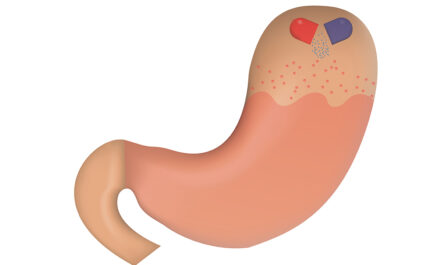
Novel Approaches in Antibiotic Development
The emergence of antibiotic resistance has posed a serious threat in recent decades. While many “superbugs” have developed resistance to frontline antibiotics, researchers have been exploring novel approaches to develop new classes of antibiotics. One promising area is the use of phage therapy which utilizes bacteriophages or “phages” that are viruses which infect and kill bacteria. Phages have shown potential to specifically target pathogenic bacteria while leaving beneficial gut bacteria unharmed. Several clinical trials are currently underway to test the safety and efficacy of phage therapy for treating bacterial infections like Pseudomonas and Staphylococcus that are resistant to many antibiotics. The ability of phages to self-replicate also provides the advantage of prolonged antibacterial activity compared to conventional antibiotics.
Advancements in Vaccine Technology
Vaccines have played a pivotal role in combatting infectious diseases for decades. However, vaccine development still faces major challenges for diseases such as HIV, malaria and tuberculosis which cause significant global disease burden. New vaccine platforms employing novel immunization strategies are being explored to develop more effective vaccines against these diseases. Nanoparticle vaccine platforms incorporated with immunostimulatory agents have shown promise in preclinical studies by eliciting strong antibody and T cell immune responses. Researchers are also engineering novel viral vectors based on adenoviruses, vesicular stomatitis virus and influenza virus to deliver vaccine antigens and stimulate robust, long-lasting protective immunity. Advances in DNA vaccines, mRNA vaccines and subunit vaccines offer additional approaches to develop next-generation vaccines against infectious diseases.
New Targets for Antimicrobial Drug Discovery
Traditional antibiotics have targeted a limited number of bacterial processes such as cell wall synthesis, protein synthesis and DNA/RNA metabolism. However, the majority of bacteria have developed resistance to these common targets. To overcome resistance, researchers are investigating previously unexploited pathways and structures essential for bacterial viability as new antimicrobial targets. These include mechanisms regulating bacterial metabolism, virulence factors, quorum sensing and formation of biofilms. High-throughput screening techniques allow rapid testing of large chemical libraries to discover inhibitory compounds against novel targets. With the bacterial genome sequence data available, in silico screening also facilitates structure-based drug design and identification of potential lead molecules for optimization. Dual targeting antibacterial agents attacking multiple essential pathways simultaneously may help delay the emergence of drug resistance.
Host-Directed Therapies
While antimicrobials directly kill or inhibit pathogens, host-directed therapies aim to modulate the host immune response against infections. The rationale is to reduce pathogen replication and toxicity while restoring homeostasis. Strategies involve blocking inflammatory cytokine release, augmenting host defenses and promoting tissue repair. For example, corticosteroids are prescribed to dampen hyperinflammation in sepsis. Statins possess both anti-inflammatory and immunomodulatory properties beneficial in viral infections like influenza. Other candidates in clinical evaluation include metformin, iNOS inhibitors, PI3K inhibitors, anticoagulants and composition of gut microbiota. By addressing the abnormally responding host rather than the pathogen alone, these immunotherapies may adjunctively treat disease or prevent excessive immunopathology and organ damage. Further studies are ongoing to identify additional safe and effective host-directed drug combinations across diverse infections.
Therapeutics Targeting Emerging Infections
Emerging and re-emerging pathogens continually challenge public health preparedness worldwide. With increasing globalization and climatic changes facilitating their spread, zoonotic viruses crossing over to humans have caused pandemics of Ebola, SARS, MERS and most recently COVID-19. Therapeutic intervention is critical during outbreaks until vaccines become available. For Ebola, monoclonal antibody cocktails demonstrated efficacy in clinical trials. Antiviral remdesivir received emergency approval for COVID-19 for its ability to inhibit SARS-CoV-2 viral replication in vitro and phase 3 trials. Targeted RNA interference shows promise against arenaviruses like Lassa fever virus. Development of broad-spectrum antivirals effective against multiple viral families remains an active area of investigation. Researchers are screening compound libraries for potential leads and optimizing drug-like properties to create stockpiles for rapid therapeutic deployment against unknown future pandemic threats.
Novel Drug Delivery Systems
Conventional drug formulations face issues like poor bioavailability, toxicity, development of resistance and inability to reach target sites of infection effectively. Nanotechnology offers solutions through customized drug delivery systems engineered at the nano-scale. Nanocarriers aid controlled and targeted delivery of antimicrobial and immunotherapeutic agents. Examples include solid lipid nanoparticles, liposomes, polymeric nanoparticles, dendrimers and metallic nanoparticles coated with antimicrobial compounds. They help achieve better tissue and intracellular penetration, protect drugs from degradation, sustain drug release and even enable multi-drug delivery. Inhalable and oral nanoparticle formulations help treatment of lung and intestinal infections respectively. Nanobiosensors coupled with drug carriers allow real-time monitoring of drug concentrations. With advances in material design, these “magic bullets” aim to revolutionize delivery of future therapeutics against resistant pathogens.
Precision and Personalized Therapeutics
Treatment of infectious diseases is moving towards precision and personalized approaches taking into account individual patient profiles. Next-generation sequencing allows in-depth understanding of pathogen genotypes and host genetic variations impacting disease susceptibility, progression, drug metabolism and response. Integrating such multidimensional data through artificial intelligence enables patient stratification, identification of biomarker signatures and prediction of optimal therapeutic regimens. For example, genetic variations in HIV patients influence optimal drug/dose selections to maximize efficacy and prevent toxicities or resistance. Factoring patient comorbidities, microbi
*Note:
1. Source: Coherent Market Insights, Public sources, Desk research
2. We have leveraged AI tools to mine information and compile



